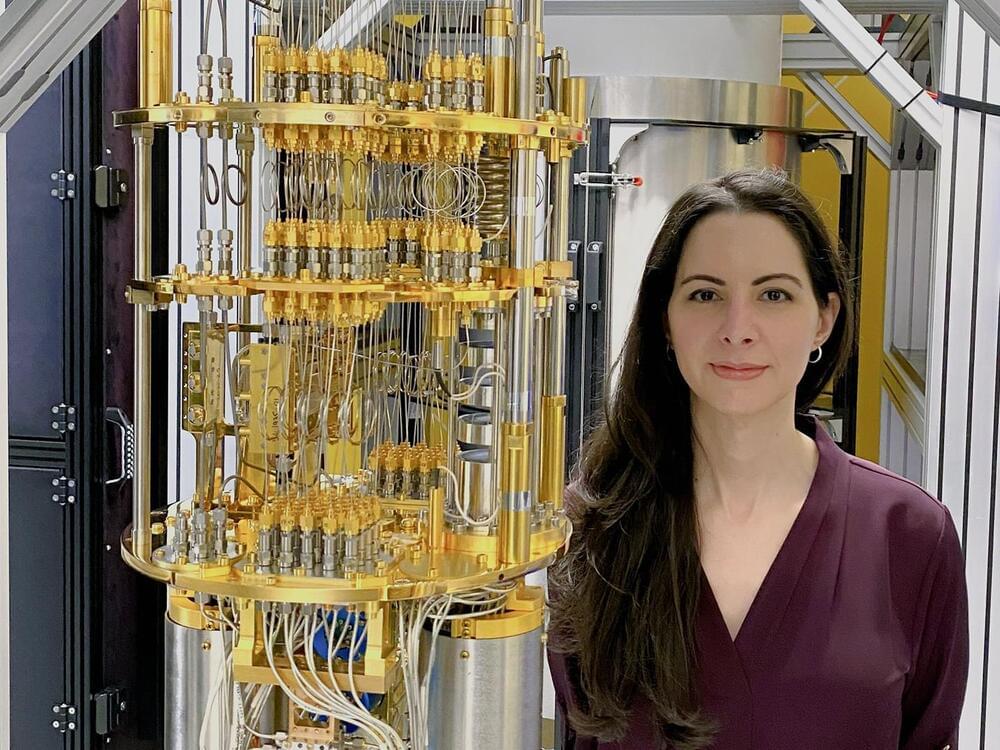Mar 28, 2022
Phison: Enthusiast PCIe 5.0 SSDs Will Require Active Cooling
Posted by Genevieve Klien in categories: computing, electronics
Active cooling will be required for high-performance PCIe 5.0 SSDs, as other drives will get hotter.
Active cooling will be required for high-performance PCIe 5.0 SSDs, as other drives will get hotter.
Tiny biological computers made of DNA could revolutionize the way we diagnose and treat a slew of diseases, once the technology is fully fleshed out. However, a major stumbling block for these DNA-based devices, which can operate in both cells and liquid solutions, has been how short-lived they are. Just one use and the computers are spent.
Now, researchers at the National Institute of Standards and Technology (NIST) may have developed long-lived biological computers that could potentially persist inside cells. In a paper published in the journal Science Advances, the authors forgo the traditional DNA-based approach, opting instead to use the nucleic acid RNA to build computers. The results demonstrate that the RNA circuits are as dependable and versatile as their DNA-based counterparts. What’s more, living cells may be able to create these RNA circuits continuously, something that is not readily possible with DNA circuits, further positioning RNA as a promising candidate for powerful, long-lasting biological computers.
Much like the computer or smart device you are likely reading this on, biological computers can be programmed to carry out different kinds of tasks.
Techniques from computer science may help explain the tendency in biology for structures to repeat themselves.
At GTC 2022, Nvidia CEO Jensen Huang finally shared more details around the company’s Arm endeavors as he unveiled the company’s new 144-core Grace CPU Superchip, the company’s first CPU-only Arm chip designed for the data center. The Neoverse-based system supports Arm v9 and comes as two CPUs fused together with Nvidia’s newly branded NVLink-C2C interconnect tech. Nvidia claims the Grace CPU Superchip offers 1.5X more performance in a SPEC benchmark than two of the last-gen 64-core AMD EPYC processors in its own DGX A100 servers, and twice the power efficiency of today’s leading server chips. Overall, Nvidia claims the Grace CPU Superchip will be the fastest processor on the market when it ships in early 2023 for a wide range of applications, like hyperscale computing, data analytics, and scientific computing.
Nvidia unveiled its new 144-core Arm-based Grace CPU Superchip at GTC 2022 along with a host of new interconnect technologies.
We have designed an optical memristive element that allows the transmission of coherent quantum information as a superposition of single photons on spatial modes. We have realized the prototype of such a device on a glass-based, laser-written photonic processor and thereby provided what is, to the best of our knowledge, the first experimental demonstration of a quantum memristor. We have then designed a memristor-based quantum reservoir computer and tested it numerically on both classical and quantum tasks, achieving strong performance with very limited physical and computational resources and, most importantly, no architectural change from one to the other.
Our demonstrated quantum memristor is feasible in practice and readily scalable to larger architectures using integrated quantum photonics, with immediate feasibility in the noisy intermediate-scale quantum regime. The only hard limit for larger scalability—as with most quantum photonic applications—is the achievable single-photon rate. A foreseeable advancement would be the integration of optical and electronic components within the same chip (rather than using external electronics), which is conceivable using current semiconductor technology. Additionally, the frequency at which our quantum memristor operates can be easily improved. For laser-written circuits, high-frequency operations are readily available at the expense of higher-power consumption28, whereas other photonic platforms routinely enable frequencies even in the gigahertz regime43. For exploiting these frequencies, however, the photon detection rate must be improved as well.

The senior product manager leading hardware and software product development at the Center for Quantum Computing wants to make fault-tolerant quantum computing a reality.
Tech institutions are trying to find ways to guarantee security as new processing systems becoming increasingly sophisticated.
An elastic light-emitting polymer that glows like a filament in a light bulb could lead to affordable, practical and robust flexible screens.
Flexible screens could form part of wearable computers that stick to our skin and do away with the need to carry a separate smartphone or laptop. But the various existing flexible displays all have flaws: they either require high voltages to run, are too fragile, too expensive, not bendy enough or lack brightness.
Scientists from the NTU Singapore and the Korea Institute of Machinery & Materials (KIMM) have developed a technique to create a highly uniform and scalable semiconductor wafer, paving the way to higher chip yield and more cost-efficient semiconductors.
Left: Image of a six-inch silicon wafer with printed metal layers and its top-view scanning electron microscope image. Right: Image of the six-inch silicon wafer with nanowires and its cross-sectional scanning electron microscope image. (Image: NTU Singpore)
Semiconductor chips commonly found in smart phones and computers are difficult and complex to make, requiring highly advanced machines and special environments to manufacture.
